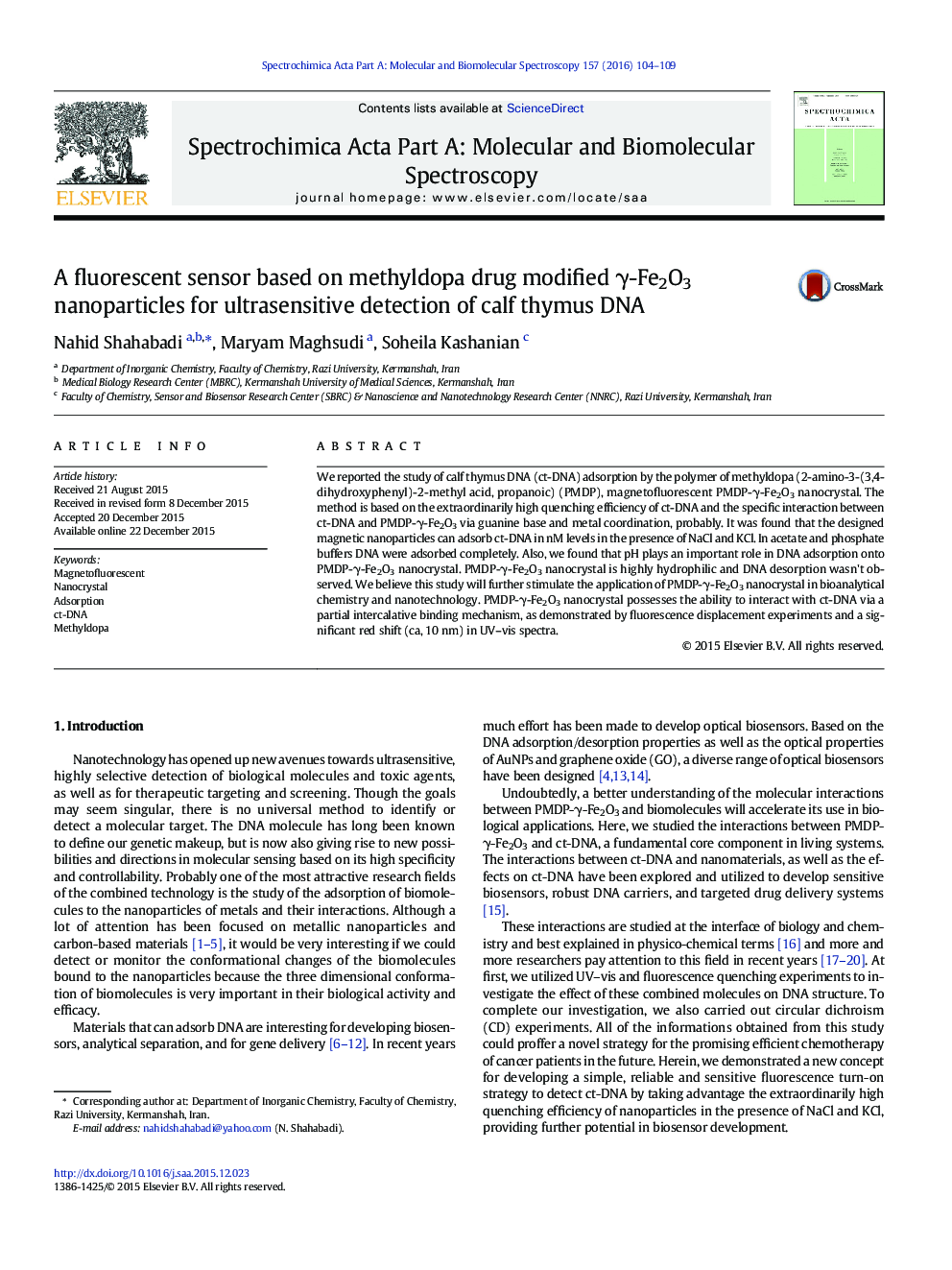| Article ID | Journal | Published Year | Pages | File Type |
|---|---|---|---|---|
| 1229322 | Spectrochimica Acta Part A: Molecular and Biomolecular Spectroscopy | 2016 | 6 Pages |
•The designed magnetic nanoparticles can adsorb CT-DNA in nM levels in presence NaCl and KCl.•PMDP-γ-Fe2O3 adsorbs DNA and strongly quenches fluorescence in the presence of NaCl and KCl.•pH plays an important role in DNA adsorption onto PMDP-γ-Fe2O3 nanocrystal.•The experiments indicate that the PMDP-γ-Fe2O3 might have certain base selectivity.
We reported the study of calf thymus DNA (ct-DNA) adsorption by the polymer of methyldopa (2-amino-3-(3,4-dihydroxyphenyl)-2-methyl acid, propanoic) (PMDP), magnetofluorescent PMDP-γ-Fe2O3 nanocrystal. The method is based on the extraordinarily high quenching efficiency of ct-DNA and the specific interaction between ct-DNA and PMDP-γ-Fe2O3 via guanine base and metal coordination, probably. It was found that the designed magnetic nanoparticles can adsorb ct-DNA in nM levels in the presence of NaCl and KCl. In acetate and phosphate buffers DNA were adsorbed completely. Also, we found that pH plays an important role in DNA adsorption onto PMDP-γ-Fe2O3 nanocrystal. PMDP-γ-Fe2O3 nanocrystal is highly hydrophilic and DNA desorption wasn't observed. We believe this study will further stimulate the application of PMDP-γ-Fe2O3 nanocrystal in bioanalytical chemistry and nanotechnology. PMDP-γ-Fe2O3 nanocrystal possesses the ability to interact with ct-DNA via a partial intercalative binding mechanism, as demonstrated by fluorescence displacement experiments and a significant red shift (ca, 10 nm) in UV–vis spectra.
Graphical abstractFigure optionsDownload full-size imageDownload as PowerPoint slide
